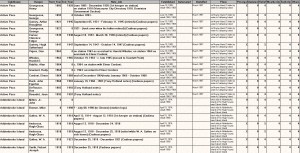 All Canadian government employees who are eligible for retirement are eligible for:
All Canadian government employees who are eligible for retirement are eligible for:
The Public Service Pension Plan (PSPP)
Canada Pension Plan (CPP)
Old Age Security (OAS) pension at age 65
You are entitled to a Public Service pension (immediate annuity), if you retire:(source)
- at or after age 60 with two (2) or more years of pensionable service; or
- at or after age 55 with 30 or more years of pensionable service.
A Public Service pension is calculated according to the following basic pension formula:(source)
|
2 per |
X |
number of years of |
X |
your average salary for the five |
Maximum Pension Payable To You Is ONLY For 35 Years Which Equals 70%.
Continue reading Canadian Government Pension Plans for Retiring Lighthouse Keepers









